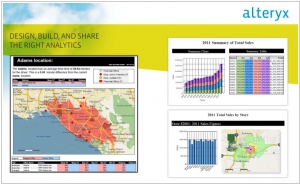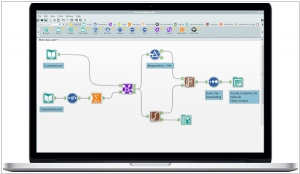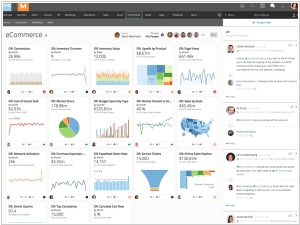Alteryx vs Domo
June 09, 2023 | Author: Michael Stromann
22

Alteryx provides an indispensable and easy-to-use analytics platform for enterprise companies making critical decisions that drive their business strategy. Alteryx Analytics provides analysts with an intuitive workflow for data blending and advanced analytics that leads to deeper insights in hours, not the weeks typical of traditional approaches.
Alteryx and Domo are both powerful data analytics platforms that help businesses extract insights from their data. Alteryx provides a comprehensive self-service data analytics and data preparation solution, empowering users to blend, cleanse, and analyze data from various sources without the need for coding. It offers a visual workflow interface and a wide range of data transformation and modeling tools. On the other hand, Domo is a cloud-based business intelligence platform that combines data visualization, dashboards, and collaborative features to provide real-time insights and analytics. It allows users to easily create interactive visualizations and share data-driven reports across the organization.
See also: Top 10 Business Intelligence software
See also: Top 10 Business Intelligence software
Alteryx vs Domo in our news:
2014. Alteryx gets $60M to develop analytical app-building platform

Alteryx, a platform that enables the creation of analytical apps through a workflow interface using various data sources, has received a significant funding boost of $60 million in a Series B round led by SAP. Alteryx empowers users to design workflows by effortlessly incorporating different data sources and objects. The resulting design can be packaged as an application for sharing with others or for generating reports, pivot tables, and other desired outputs. According to George, the company's president, Alteryx is not in direct competition with the typical Business Intelligence solutions, whether they are modern platforms like Tableau and QlikView or traditional enterprise players such as SAP Business Objects (where Mathew previously worked), Oracle Hyperion, or IBM Cognos.



